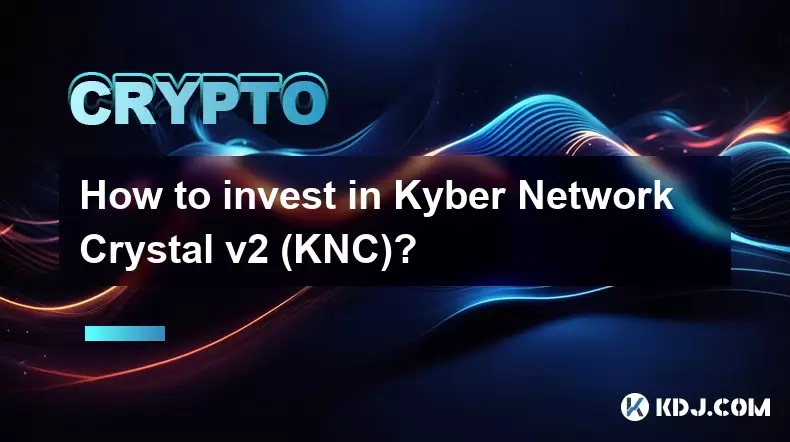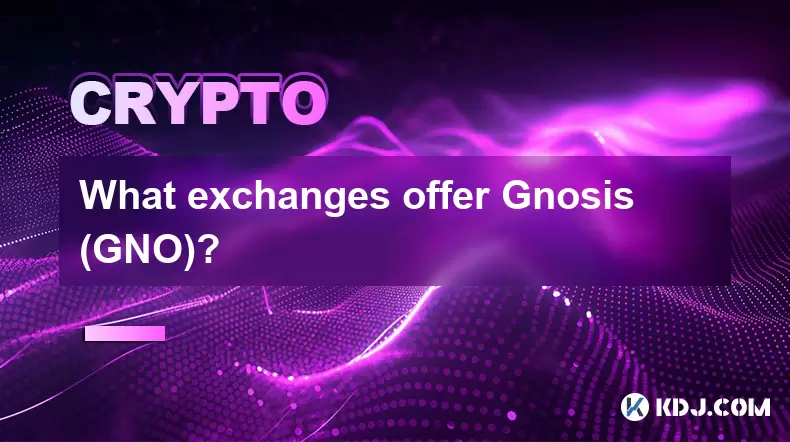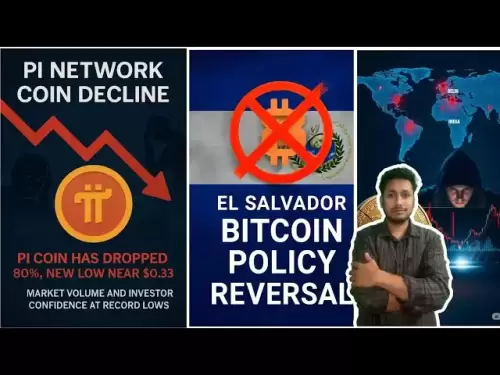-
 Bitcoin
Bitcoin $119700
0.53% -
 Ethereum
Ethereum $4508
5.39% -
 XRP
XRP $3.270
2.86% -
 Tether USDt
Tether USDt $1.000
0.00% -
 BNB
BNB $831.0
2.92% -
 Solana
Solana $189.6
6.89% -
 USDC
USDC $0.9999
-0.01% -
 Dogecoin
Dogecoin $0.2350
2.92% -
 TRON
TRON $0.3500
1.34% -
 Cardano
Cardano $0.8420
6.73% -
 Chainlink
Chainlink $23.26
8.42% -
 Hyperliquid
Hyperliquid $44.42
1.44% -
 Stellar
Stellar $0.4512
3.16% -
 Sui
Sui $3.895
5.15% -
 Bitcoin Cash
Bitcoin Cash $618.7
5.88% -
 Hedera
Hedera $0.2601
4.43% -
 Ethena USDe
Ethena USDe $1.001
0.01% -
 Avalanche
Avalanche $24.45
4.90% -
 Litecoin
Litecoin $128.1
5.41% -
 Toncoin
Toncoin $3.454
1.64% -
 UNUS SED LEO
UNUS SED LEO $9.065
0.44% -
 Shiba Inu
Shiba Inu $0.00001359
3.41% -
 Uniswap
Uniswap $11.42
1.78% -
 Polkadot
Polkadot $4.165
6.36% -
 Cronos
Cronos $0.1664
-0.50% -
 Ethena
Ethena $0.8108
1.79% -
 Dai
Dai $1.000
0.00% -
 Pepe
Pepe $0.00001213
5.22% -
 Bitget Token
Bitget Token $4.438
0.25% -
 Aave
Aave $313.3
5.02%
The technical basis of Ripple: blockchain or other technologies?
Ripple uses a distributed ledger, but its RPCA consensus mechanism differs from traditional blockchain's PoW/PoS, prioritizing speed and efficiency for financial institutions via its RippleNet network, which incorporates various technologies beyond the XRP Ledger.
Mar 08, 2025 at 09:39 pm

Key Points:
Ripple's technology is not solely based on blockchain technology.
It utilizes a distributed ledger technology (DLT) called the Ripple Protocol Consensus Algorithm (RPCA).
RPCA differs significantly from traditional blockchain consensus mechanisms like Proof-of-Work or Proof-of-Stake.
RippleNet, Ripple's network, uses both the XRP Ledger and other technologies for facilitating cross-border payments.
Understanding the technical differences is crucial for comprehending Ripple's unique position in the cryptocurrency space.
The Technical Basis of Ripple: Blockchain or Other Technologies?
The question of whether Ripple is based on blockchain technology is a complex one, often leading to misconceptions. While it uses a distributed ledger, it's not a blockchain in the traditional sense. Ripple employs a unique consensus mechanism and architecture distinct from popular blockchain networks like Bitcoin or Ethereum.
Ripple's core technology is the XRP Ledger, a distributed database that tracks transactions. However, the consensus mechanism used to validate transactions on the XRP Ledger, the Ripple Protocol Consensus Algorithm (RPCA), differs substantially from Proof-of-Work (PoW) or Proof-of-Stake (PoS) used by many cryptocurrencies.
RPCA is a federated consensus mechanism. This means that a network of trusted validators, called validators, agree on the validity of transactions. These validators are pre-selected and operate under Ripple's oversight, a significant departure from the decentralized nature of many blockchains. The selection and operation of these validators introduces a level of centralization that distinguishes Ripple from purely decentralized blockchain networks.
This centralized element allows for faster transaction speeds and lower transaction fees compared to many blockchain networks. The speed is a crucial advantage for Ripple's target market: financial institutions seeking efficient cross-border payment solutions. The reduced latency is achieved by circumventing the need for extensive mining or staking processes inherent in PoW and PoS systems.
Beyond the XRP Ledger, RippleNet, Ripple's payment network, incorporates various technologies to facilitate seamless cross-border transactions. This includes APIs, gateways, and other infrastructure components. These components work in conjunction with the XRP Ledger, but are not themselves based on the same consensus mechanism.
The use of XRP, Ripple's native cryptocurrency, further complicates the picture. While XRP can be used on the XRP Ledger, its functionality within RippleNet is not strictly tied to the ledger's consensus mechanism. It acts as a bridge currency, facilitating faster and more efficient conversions between different fiat currencies.
Therefore, while Ripple utilizes a distributed ledger, its technology is not solely reliant on blockchain principles. Its federated consensus, unique architecture, and the integration of various technologies distinguish it from other cryptocurrency projects. The technology's design prioritizes speed, efficiency, and scalability, characteristics valued by financial institutions adopting Ripple's solutions. This focus on practical application in the financial sector sets it apart from many cryptocurrencies focused on decentralized idealism.
The difference between RPCA and other consensus mechanisms is key to understanding Ripple's technology. RPCA prioritizes speed and reliability, sacrificing some level of decentralization. This trade-off is a conscious design choice aimed at attracting institutional clients who value predictability and efficiency over complete decentralization.
The architecture of RippleNet, encompassing the XRP Ledger and additional technologies, showcases a multifaceted approach to cross-border payments. It is not a monolithic blockchain system but a network integrating diverse components to achieve its objectives. This integration approach reflects the company's focus on practical applications within the financial industry.
Ripple's approach highlights the evolving nature of distributed ledger technology. While the term "blockchain" is often used broadly, the underlying technology can vary significantly. Ripple's technology showcases an alternative approach, prioritizing speed and efficiency within a partially centralized architecture. This choice reflects a specific market focus and technological strategy.
Frequently Asked Questions:
Q: Is Ripple a blockchain?
A: Ripple uses a distributed ledger, but its consensus mechanism (RPCA) and overall architecture differ significantly from typical blockchain systems like Bitcoin or Ethereum. It is a DLT, but not a purely decentralized blockchain.
Q: How does Ripple's consensus mechanism differ from blockchain consensus?
A: Ripple uses RPCA, a federated consensus mechanism, unlike the decentralized PoW or PoS used by many blockchains. RPCA relies on a network of pre-selected validators, resulting in faster transaction speeds but less decentralization.
Q: What is the role of XRP in Ripple's system?
A: XRP is Ripple's native cryptocurrency, primarily used as a bridge currency to facilitate faster and more efficient cross-border transactions within RippleNet. It's not solely dependent on the XRP Ledger's consensus mechanism.
Q: Is Ripple decentralized?
A: Ripple is not fully decentralized due to its federated consensus mechanism and the pre-selected nature of its validators. This contrasts with the decentralized nature of many blockchain networks. However, the degree of decentralization is a matter of ongoing discussion and evolution within the cryptocurrency community.
Q: What are the advantages of Ripple's technology over traditional blockchain?
A: Ripple's technology prioritizes speed, efficiency, and scalability, making it attractive to financial institutions seeking faster and cheaper cross-border payments. This is achieved at the cost of some decentralization.
Q: What are the disadvantages of Ripple's technology compared to traditional blockchain?
A: The reduced decentralization of Ripple's system, due to its federated consensus mechanism, is often cited as a disadvantage by those who prioritize complete decentralization as a core tenet of cryptocurrency.
Disclaimer:info@kdj.com
The information provided is not trading advice. kdj.com does not assume any responsibility for any investments made based on the information provided in this article. Cryptocurrencies are highly volatile and it is highly recommended that you invest with caution after thorough research!
If you believe that the content used on this website infringes your copyright, please contact us immediately (info@kdj.com) and we will delete it promptly.
- Unich's OTC Exchange: Surging with $1.2B Volume – What's the Hype?
- 2025-08-13 02:50:11
- MoonBull's Explosive Moves: Your Crypto Whitelist Ticket to Ride!
- 2025-08-13 02:30:11
- MAGACOIN Finance: Don't Miss the Presale Bonus!
- 2025-08-13 02:30:11
- Trump's Crypto Kingdom: $2.4 Billion and Counting
- 2025-08-13 02:50:11
- Solana, LSTs, and SEC Approval: A New Dawn for Crypto?
- 2025-08-13 02:55:12
- Bitcoin's Profit Surge: Unpacking the BTC Value Boom
- 2025-08-13 02:55:12
Related knowledge

How to purchase Aragon (ANT)?
Aug 09,2025 at 11:56pm
Understanding Aragon (ANT) and Its PurposeAragon (ANT) is a decentralized governance token that powers the Aragon Network, a platform built on the Eth...

Where to trade Band Protocol (BAND)?
Aug 10,2025 at 11:36pm
Understanding the Role of Private Keys in Cryptocurrency WalletsIn the world of cryptocurrency, a private key is one of the most critical components o...

What is the most secure way to buy Ocean Protocol (OCEAN)?
Aug 10,2025 at 01:01pm
Understanding Ocean Protocol (OCEAN) and Its EcosystemOcean Protocol (OCEAN) is a decentralized data exchange platform built on blockchain technology,...

How to invest in Kyber Network Crystal v2 (KNC)?
Aug 12,2025 at 05:21pm
Understanding Kyber Network Crystal v2 (KNC)Kyber Network is a decentralized liquidity hub built on the Ethereum blockchain that enables instant token...

Where can I buy UMA (UMA)?
Aug 07,2025 at 06:42pm
Understanding UMA and Its Role in Decentralized FinanceUMA (Universal Market Access) is an Ethereum-based decentralized finance (DeFi) protocol design...

What exchanges offer Gnosis (GNO)?
Aug 12,2025 at 12:42pm
Overview of Gnosis (GNO) and Its Role in the Crypto EcosystemGnosis (GNO) is a decentralized prediction market platform built on the Ethereum blockcha...

How to purchase Aragon (ANT)?
Aug 09,2025 at 11:56pm
Understanding Aragon (ANT) and Its PurposeAragon (ANT) is a decentralized governance token that powers the Aragon Network, a platform built on the Eth...

Where to trade Band Protocol (BAND)?
Aug 10,2025 at 11:36pm
Understanding the Role of Private Keys in Cryptocurrency WalletsIn the world of cryptocurrency, a private key is one of the most critical components o...

What is the most secure way to buy Ocean Protocol (OCEAN)?
Aug 10,2025 at 01:01pm
Understanding Ocean Protocol (OCEAN) and Its EcosystemOcean Protocol (OCEAN) is a decentralized data exchange platform built on blockchain technology,...

How to invest in Kyber Network Crystal v2 (KNC)?
Aug 12,2025 at 05:21pm
Understanding Kyber Network Crystal v2 (KNC)Kyber Network is a decentralized liquidity hub built on the Ethereum blockchain that enables instant token...

Where can I buy UMA (UMA)?
Aug 07,2025 at 06:42pm
Understanding UMA and Its Role in Decentralized FinanceUMA (Universal Market Access) is an Ethereum-based decentralized finance (DeFi) protocol design...

What exchanges offer Gnosis (GNO)?
Aug 12,2025 at 12:42pm
Overview of Gnosis (GNO) and Its Role in the Crypto EcosystemGnosis (GNO) is a decentralized prediction market platform built on the Ethereum blockcha...
See all articles

























































































